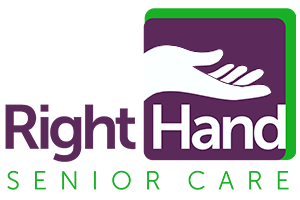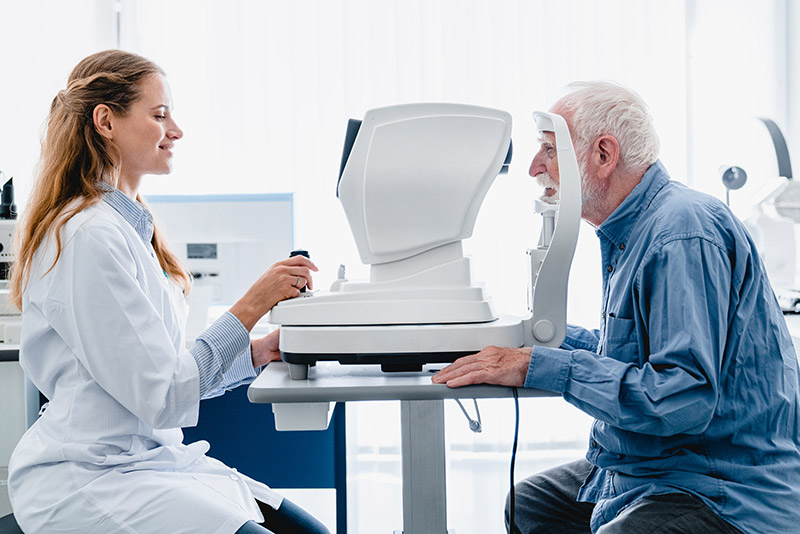Celebrating National Eye Exam Month With Essential Eye Care Tips for Seniors
August is National Eye Exam Month, so it’s a great time to talk about the importance of eye health, especially for our senior loved ones. Vision impairment can significantly affect seniors’ quality of life, so it’s essential to proactively support eye health and be on the lookout for signs of new or worsening vision problems.
Here, we’ll look at some practical advice on how to ensure optimal eye health for seniors, the most common age-related eye conditions, and symptoms to watch out for.
Understanding the importance of eye health in seniors
Vision changes are a natural part of aging — in fact, nearly 28% of people over the age of 71 have impaired vision. Presbyopia, the gradual hardening of the lens, is a normal side effect of the aging process, and it’s why so many of us need reading glasses to see up close as we get older.
But some seniors develop more serious conditions that lead to challenges in their day-to-day lives, including:
- Cataracts: This is a clouding of the lens in the eye, which leads to a decrease in vision and, if untreated, can cause severe vision loss. Symptoms often include blurred vision, glare, and difficulty seeing in low-light conditions. Fortunately, cataracts are highly treatable with an artificial lens replacement — one of the most commonly performed procedures in the U.S.
- Glaucoma: This is a group of eye conditions that damage the optic nerve, often caused by abnormally high pressure in the eye. Glaucoma is one of the leading causes of blindness for people over the age of 60.
- Age-Related Macular Degeneration (AMD): This condition affects the macula, the part of the retina that lets you see straight ahead, and leads to the loss of central vision. It can make everyday activities like driving and reading especially challenging or even impossible.
- Diabetic Retinopathy: As the name implies, this condition occurs in people who have diabetes. It’s caused by damage to the blood vessels of the light-sensitive tissue at the back of the eye (retina). It can cause blood vessels to swell and leak or cause abnormal new blood vessels to grow on the surface of the retina.
Early detection through regular eye exams can prevent or slow down the progression of these conditions, allowing seniors to keep their vision — and independence — for as long as possible.
Scheduling regular eye exams
National Eye Exam Month is the perfect reminder to schedule an eye exam for your senior loved one. Regular check-ups with an optometrist or ophthalmologist are essential for:
- Early Detection: Many eye diseases develop slowly and don’t show any symptoms early on. Regular exams are an opportunity to catch and treat issues before they progress.
- Updating Prescriptions: For those who already wear glasses or contacts, gradually worsening vision can go unnoticed until it starts to affect everyday life. But using the wrong prescription can cause eye strain that worsens vision problems.
- Monitoring Changes: Regular check-ups are especially important for seniors with existing eye conditions, as they allow the doctor to monitor the disease’s progress and adjust treatments as necessary to slow progression.
Eye exams should be a part of every senior’s routine health checks, ideally on an annual basis or as recommended by their eye doctor.
Daily eye care tips
In addition to regular exams, these good practices and habits can help maintain vision and eye health:
- Install Adequate Lighting: Dim lighting can cause eye strain, so make sure the living environment has plenty of bright lighting, especially for up-close or visually taxing activities like reading.
- Use UV Protection: Prolonged UV exposure can make cataracts and other eye issues worse, so it’s a good idea to wear sunglasses that block 100% of UVA and UVB rays when outdoors.
- Eat a Nutritious Diet: Foods rich in antioxidants, vitamins C and E, and beta-carotene, such as leafy greens, colorful fruits and vegetables, fish, and nuts, can help protect against eye conditions like AMD.
- Limit Screen Time: Regular breaks from screens (computers, tablets, TVs) can help reduce eye strain. The 20-20-20 rule is a good guideline to follow — every 20 minutes, look at something 20 feet away for at least 20 seconds.
- Use Assistive Technology: There are plenty of apps and devices designed to help those with visual impairments, such text-to-speech tools, magnifiers, and high-contrast settings. These tools can help minimize eye strain and make things like reading or browsing the internet easier and more accessible for those with vision problems.
Signs of potential eye health issues
Regular eye exams are essential, but there are also some signs and symptoms to watch out for that can indicate sudden or worsening eye health or vision issues, including:
- Sudden vision loss or blurriness
- Visible changes to the eye, such as redness or excessive tear production
- Eye pain or frequent headaches
- Increased sensitivity to light
- Difficulty adapting to low-light conditions
Any of these symptoms warrant an immediate appointment with an eye care professional.
Supporting seniors’ health and independence
Our vision is something many of us take for granted, but the older we get, the more vulnerable we are to conditions that can cause significant vision loss. Good eye care habits, including regular eye exams, help ensure that we can continue to do the things we love without impairments.
At Right Hand Senior Care, our goal is to provide seniors with the care and support they need to live life to the fullest as independently as possible. So if your senior loved one needs some extra help from a dedicated in-home caregiver, contact us today. We’ll discuss their needs and develop a customized care plan that works for your family.

We are Superheroes in Comfortable Clothes™
We take care of our clients, their families, our staff, and our league of franchise owners.

